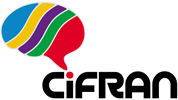Even if I always achieved good results with my university classes, I constantly noticed all sorts of linguistic approximations (problems with prosody and morphosyntax), not to mention lapses in attention and recurrent loss of interest among my learners… Therefore, I had been looking for a while for other ways of teaching that could breathe new life into my courses.
I discovered the NLA at the FIPF conference held in Liège in 2016. Olivier Massé told me about his experience and started me thinking. I immediately read up on the subject, but while these readings were stimulating, it took me some time to make myself available for an actual training session. As soon as I completed my initial training session, in March last year, I was able to put this approach into practice with my learners. After just a few classroom hours, we’d already made a 180-degree turn!
The benefits are double and are obvious as much on my learners’ part as on mine, the teacher’s. Starting the teaching sequences straight off with spoken interactions to build their internal grammar produced unexpected results among my learners. The sentence-based pedagogy lets them express themselves precisely and coherently when speaking. Their prosody has noticeably improved, and they now want to speak and do so spontaneously in the classroom. This then reflects on their reading, which starts to make sense to them given that they’re now concentrating on the semantics of what they’re reading and no longer on its linguistics forms. As for writing, it’s now basically problem-free: my learners write faster, enjoy doing so, and without translating any longer. They practically never make mistakes anymore! Which, for me, means a lot less time spent correcting… What bliss!
Finally, one more virtuous effect of the NLA: I’m now much more motivated to prepare my courses, and obviously this comes across to my learners. No more need for textbooks: I now look for class projects according to my learners’ interests and where I can also make use of my creativity. As we always talk about ourselves, the courses are much more dynamic, thanks to natural exchanges about our respective lives. The classroom ambiance now isn’t a thing like the traditional FFL courses I used to give and that everyone’s used to.
There’s absolutely no doubt: when it comes to the NLA, there’s a before and an after. Once you’ve set foot on this path, there’s no turning back. Since I wanted to know more, I’ve just completed the NLA3 workshop for designing teaching materials, led by Dr. Joan Netten. Here too, I learnt numerous essential things about literacy teaching as applied to L2s… which I didn’t suspect at all. My curiosity is on fire, and I now want to continue to improve myself in this area.
If you have any doubts about the effectiveness of common methods and about your current teaching strategies, I can only encourage you to attend an initial training workshop, you’ll quickly form your own opinion. But a word to the wise, once you jump on the Neurolinguistic Approach’s wagon, it’s a one-way trip! Happy pedagogical travels to all those questioning themselves!
Marion Ingrassia, M.A.
Docente de Francés Lengua Extranjera (FLE)
Universidad Espíritu Santo – UEES (Ecuador)




